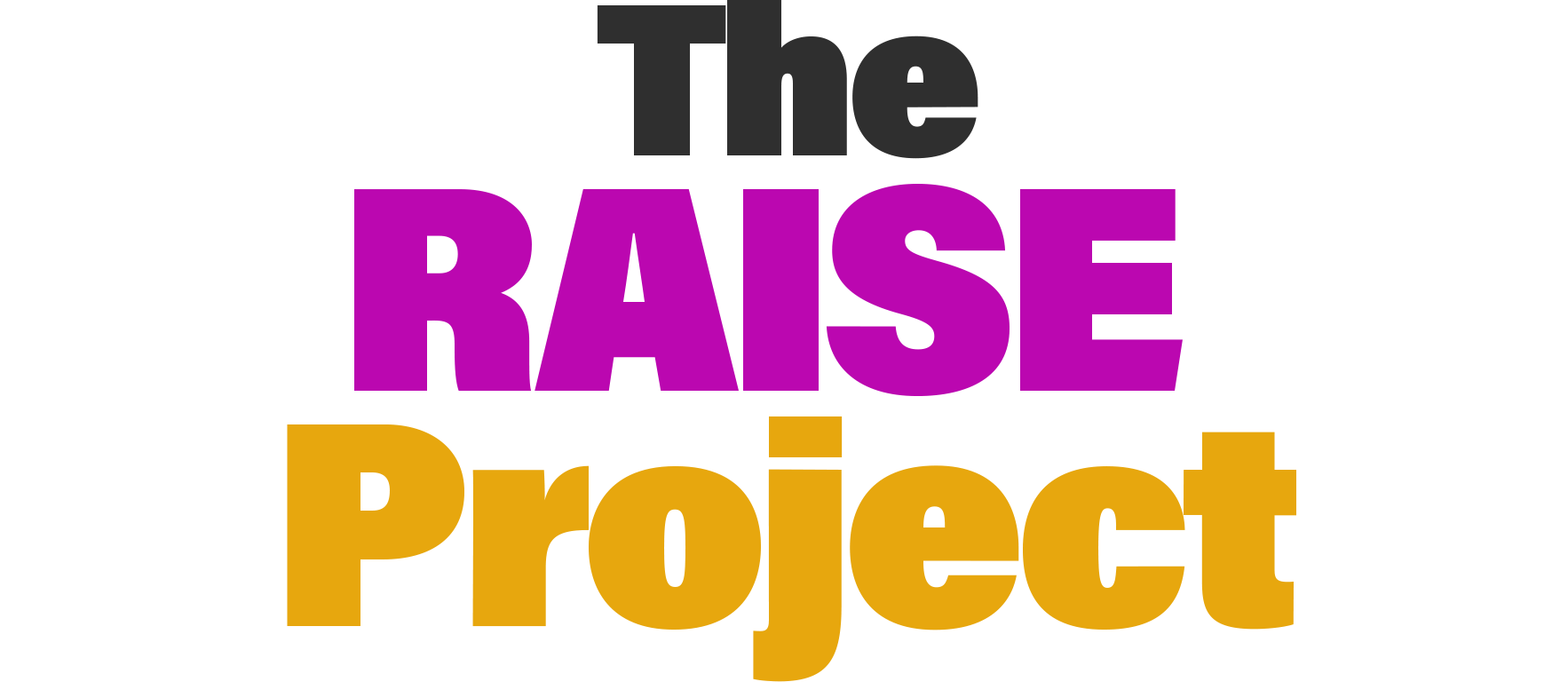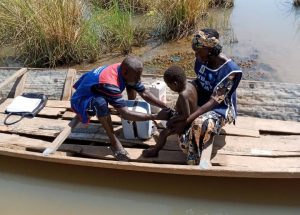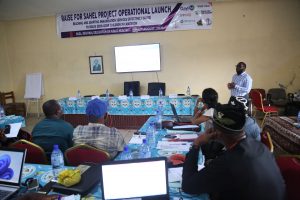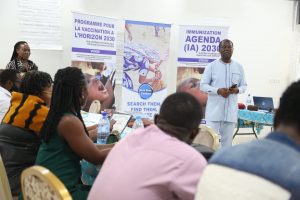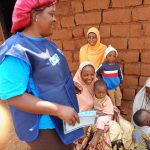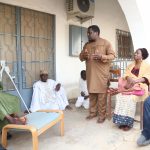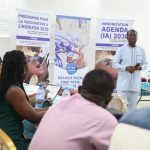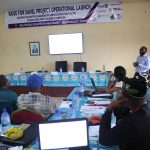The Far North Region is one of the three regions in Cameroon where the R4S Zero Dose Immunisation Project (ZIP) will implement its 18-month interventions in 9 Health Districts. Other regions include the Northwest and Southwest regions.
Strategising with local partners to ensure 100% coverage of Zero –Dose children in missed communities of the Far North Region of Cameroon
Far North, a region with many colours
“When I first stood at the Makabay Bridge, it dawned on me that the extreme North was not only geographically extreme from the rest of the country, but everything about it looked extreme.” Anne, the Project Officer for the RAISE for Sahel (R4S) Project, explained how the empty river under the bridge at the entrance into the city of Maroua made her understand the Region’s uniqueness.
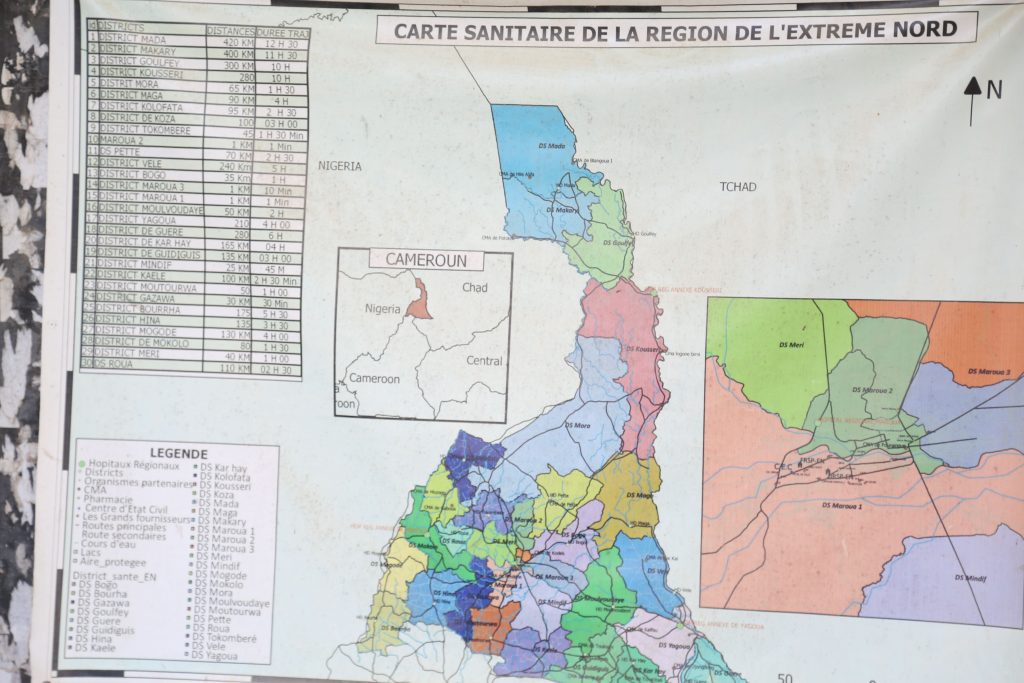
The Makabay River in Maroua, the headquarters of the Far North region, was a large stretch of dry sand currently used as a football field. Far off the bridge, one could see a group of women waiting to fetch water in a dug hole on the sand River. Makabay River, like most rivers in the Far North, had relinquished its waters in the heart of the dry season.
It was 1:20 PM; the temperature in Maroua was 43 degrees Celsius. One could see men and women lying under the shades of trees at the roadside. “Despite the mosquitoes, we prefer to sleep outside due to the unbearable heat the house generates.” Anne hinted. This is the average yearly temperature of the Far North in March and April, and by September, rivers overflow their banks, causing floats and waves of migration in some communities of the Region. “Maga, for example, is inaccessible in the rainy seasons as it is situated in the lower basin of the Logone and Chari Rivers. When there is a heavy downpour, Maga sinks underwater.” SEDE, Divisional Officer of Maga, bolstered.
A weak health system compromises the health of its people
Reputed for its extreme climates, the Far North Region of Cameroon is also characterised by poor road networks and pockets of active armed conflicts that have disrupted the functionality of the Health system, especially at the peripheral levels.
Guivirdig Integrated Health Centre has a target population for vaccination of over 45000, with over 50% to be served through outreach and mobile strategies. “We cannot cover the entire Health Area in a single month. We are just two staff with four volunteers to run the facility and conduct outreach activities. It is a daunting task.” Alhadji Alifa, Guivirdig Chief of Center, attest.
Such challenges have made it difficult for the government to extend its immunisation services across the entire triangle of the Far North Region, especially in extremely hard-to-reach communities or amongst special populations. According to DHS2 March 2023, the Far North region counts over 12,487 zero-dose children who are either unimmunised or under-immunised, hence exposing them to vaccine-preventable diseases.
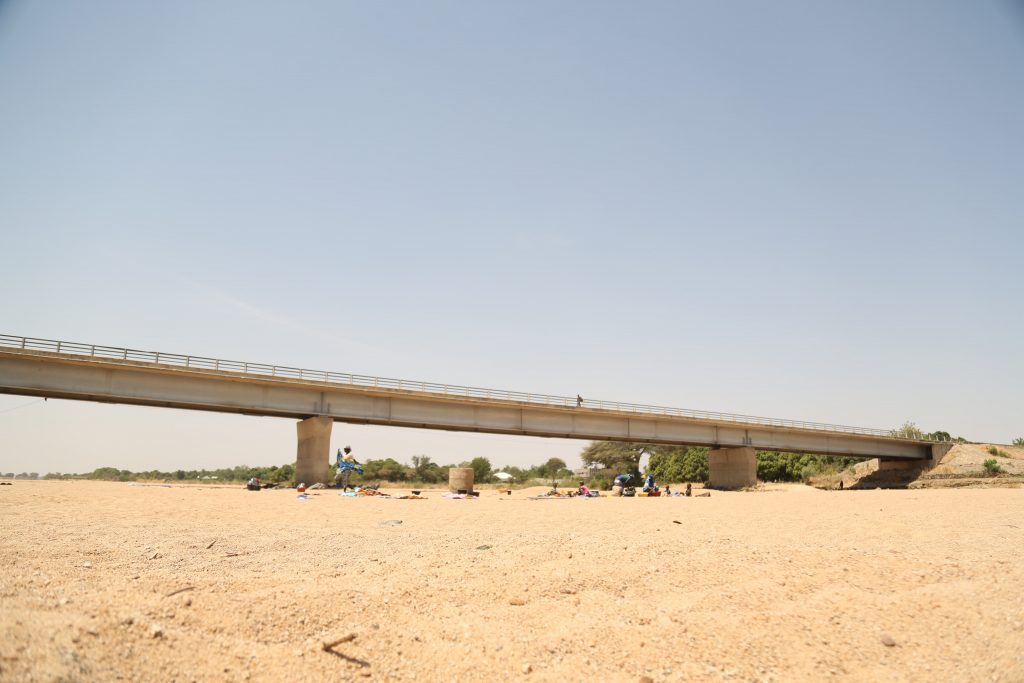
“We have an active reproductive age population and are expected to vaccinate 40% of children in Cameroon. With a depleting workforce covering vast communities who are not always seeking our services, it is unsurprising that we have many zero-dose children in the Region.” Dr Hamadou Bava Boubakary- Far North Regional Delegate of Public Health.
The inability to offer 100% coverage has been attributed to several factors ranging from the lack of personnel, limited health facilities and amenities, presence of migrant and border communities, early marriages, high rates of home deliveries, poverty, ignorance, high level of illiteracy and cultural norms among others. “For the team to successfully penetrate these underserved communities, you need to reinforce strategies to change behaviour patterns acting as impediments to the demand for immunisation services.” Dr Yaya Alhadji Adam, EPI Regional Coordinator, Far North, advised the R4S team.
On the Mark and Ready to Go!
To better appraise the problem, the R4S team has been working tirelessly to conduct a desk review and baseline assessment to ensure it produces strategic interventions to reverse the tides and ensure no child is left unimmunised. During the first seven months of the Inception Phase, the R4S Team organised top-notch advocacy meetings and workshops with EPI and other stakeholders in the immunisation landscape at the national and sub-national levels.
The project team met physically and virtually with health district teams, frontline healthcare workers, vaccinators, community health workers and beneficiaries (parents) in the Far North Region to discuss vaccination uptake, coverage, cold chain equipment and reasons for loss to follow-up. After this granular assessment of the 32 Health Districts in the Far North Region, the team selected five health Districts with the most zero-dose children for its program interventions. These districts include Maga, Maroua 1, Guere, Yagoua and Mora.
Informed, the R4S Team has designed robust strategies tailored to leave no one behind in finding and vaccinating all children in the ZDC communities of the Far North, starting with the Maga Health District. “The Raise for Sahel Project is set to go. We know our terrain, people, and challenges, and our teams are ready to hit the ground running.” Dr Foyeth, R4S Project Manager, reassured with much optimism.
